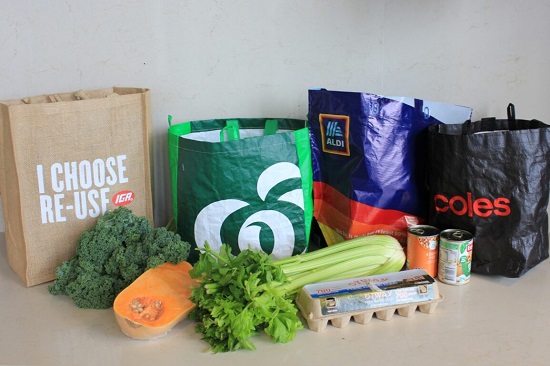Australian supermarkets failing to improve our diets, scorecard shows
Media release
A new national scorecard shows Australia's four largest supermarket retailers are not doing enough to improve population diets and is calling for higher standards on how supermarkets operate.
The Inside Our Supermarkets report rated supermarkets Woolworths, Coles, IGA and Aldi on their policies and practices around nutrition, giving them a score out of 100.
Woolworths ranked highest with 64 out of 100, while IGA ranked fourth, with a score of 31 out of 100. The average score was 46 out of 100.
Researchers from Deakin University's Global Centre for Preventive Health and Nutrition (GLOBE) in the Institute for Health Transformation (IHT) conducted the study, which was a repeat of a similar assessment conducted in 2018.
Lead author of the study, Professor Gary Sacks, Professor of Public Health Policy and Co-Director of GLOBE, said Inside our Supermarkets aims to recognise good practice, highlight areas for improvement, and advocate for sector-wide progress so that supermarkets can better contribute to improving population health.
'This report indicates that much more substantial action is needed across the supermarket sector to ensure that the places Australians buy their food support good health,' Professor Sacks said.
'There have been some gains over the past five years. For example, supermarkets have voluntarily committed to adopt the Health Star Rating across their own-brand products, and one supermarket chain has made some initial commitments to improve the healthiness of checkouts. But, overall, the actions that supermarkets have taken fall short of international best practice recommendations.'
The team collected information on supermarket policies and practices from publicly available sources, such as website and company sustainability reports, focusing on six key areas: (1) corporate strategy, (2) healthiness of own-brand products, (3) food labelling, (4) responsible marketing of unhealthy products and brands (especially to children), (5) food affordability and accessibility, (6) disclosure of external relationships.
They invited the supermarkets to verify the data collected and provide further information. Woolworths, Coles and Aldi engaged in this process, while IGA did not. The report notes that the IGA network is made up of stores that are largely independently owned and operated, and individual store initiatives may not have been captured.
'The evidence we collected was scored against industry benchmarks and public health best practice. Scores in each topic were then combined to calculate an overall score out of 100 for each company,' Professor Sacks said.
Inside our Supermarkets identified the following areas of strength in the sector:
Food labelling: All four supermarkets have committed to implement the Health Star Rating labelling system on all eligible own-brand products.
Product healthiness: Three supermarkets (Woolworths, Coles and IGA) have pledged for their own-brand products to meet the Australian government’s Healthy Food Partnership nutrient targets on sodium, sugar and saturated fat.
Corporate reporting: Two supermarkets (Woolworths and Coles) publicly disclose their proportion of sales from healthy products. Woolworths report on their sales from healthy and unhealthy products, and report progress towards their target of growing the proportion of sales from healthier products. Coles reported their sales from own-brand products only.
Checkouts: One supermarket (Woolworths) has removed children's confectionery from checkouts in all stores, although they still have other unhealthy products at checkouts, which are often heavily discounted in price.
Professor Sacks said healthy food affordability was the worst performing area.
'Supermarkets had very few policies to improve the affordability of healthier foods and have taken limited steps to restrict price promotions/discounts on unhealthy foods,' he said.
'Aldi was the only supermarket to report running limited price promotions (such as multi-buy specials) for unhealthy products.
When compared with the 2018 assessment, Aldi has improved the most over the past five years – moving from third in 2018 to second in the current evaluation. Woolworths retains its top ranking of the four supermarkets.'
Jane Martin, Executive Manager of the Food for Health Alliance, said:
'It's clear that voluntary efforts in Australia to reduce exposure to unhealthy food promotions in supermarkets are not effective.
With the power and influence supermarkets have in our communities, we want government to prioritise health over food industry profits and step in to ensure supermarkets provide a healthier food environment. This should include measures to restrict discounts on unhealthy food products and to ensure unhealthy food can’t be displayed in prominent places in both online and in-store retail spaces.'
Professor Sacks said unhealthy diets and obesity were among the leading contributors to poor health in Australia.
'Most of the food Australians buy is purchased from supermarkets. Supermarket practices, including the types of products available, their prices, the way they are promoted and their placement in-store, are some factors that shape what people choose to buy and eat,' he said.
'Supermarkets can play an important role in supporting Australians to eat more healthily but these findings show that voluntary action from supermarkets is too slow and has not gone far enough.
'The Government needs to take urgent action to set higher standards for how supermarkets operate to ensure that they better support Australians to eat healthily.
'The Australian Government is falling behind other countries. For example, the UK is now regulating supermarkets around nutrition, including legislation on healthy checkouts and restrictions on price promotions on unhealthy food,' Professor Sacks said.
Inside our Supermarkets key recommendations:
- Healthy food sales targets: All major retailers need to set company-wide targets to increase the proportion of sales from healthy products, and publicly report progress against this target each year.
- Affordability of healthy food: Cut prices of healthy foods, and limit price promotions on unhealthy products.
- Healthy checkouts: No unhealthy products, such as chocolates and sugary drinks, on display near registers in all stores nationally.
- Marketing to children: Eliminate promotion techniques (e.g., cartoon characters, interactive games) with strong appeal to children in relation to unhealthy products and brands.
- Nutrition labelling: Implement in-store strategies to guide consumers to purchase healthier products (e.g., displaying the Health Star Rating on in-store shelf tags and online).

